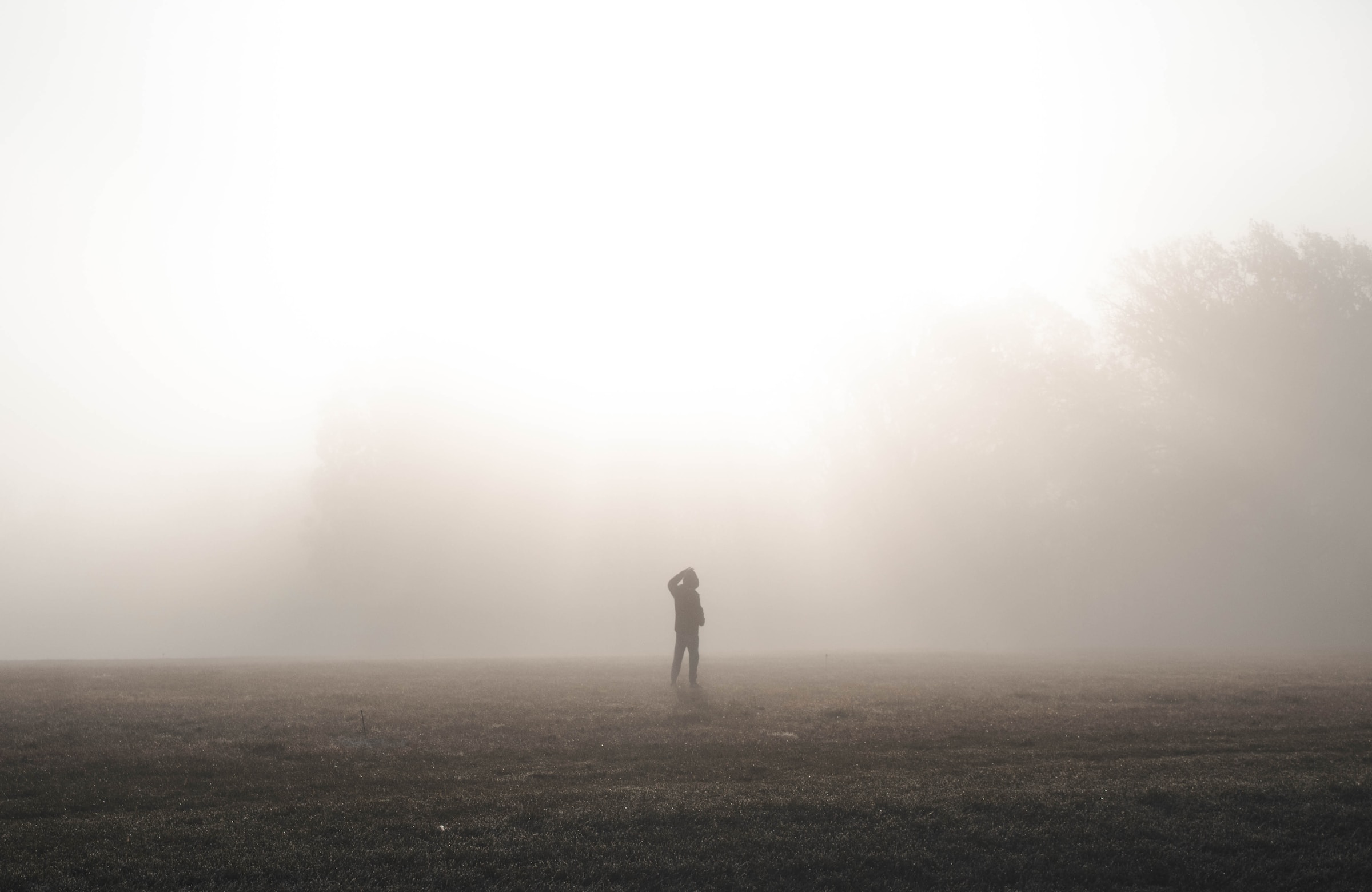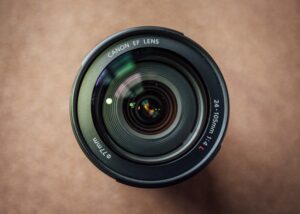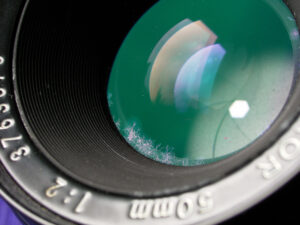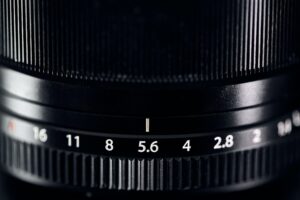Why is my camera lens foggy? Understanding and addressing lens fog is crucial for maintaining the crispness of your images.
This article will navigate through the mist, explaining the causes of lens fog, how to prevent it, and how to deal with it when it occurs. So, let’s clear the fog!
Key Takeaways
| Aspect | Summary |
|---|---|
| Definition | Lens fog is primarily condensation on the lens surface caused by temperature and humidity changes. |
| Prevention | Acclimate your gear to temperature changes gradually, use anti-fog coatings, and keep lenses clean. |
| Quick Solutions | Use a microfiber cloth to gently wipe the lens or employ a lens defogger. |
| Long-term Solutions | Store your lenses properly and consider investing in lenses with better fog resistance. |
| Creative Aspect | Fog can also be used creatively to add a mystical or ethereal quality to photographs. |
Understanding Lens Fog
Lens fog is a common annoyance among photographers. At its core, lens fog is condensation that forms on the surface of the camera lens.
This usually occurs when there’s a sudden temperature change, for instance, moving from a cool air-conditioned room to a humid, warm outdoor environment.
The fog can distort the image, reducing sharpness and sometimes adding an unwanted glare.
If you’ve ever found yourself missing a crucial shot due to a foggy lens, you know the importance of addressing this issue.
Common Causes of Lens Fog
Temperature Changes
One of the primary culprits behind lens fog is the sudden change in temperature.
When your camera and lens are cool, and they are suddenly exposed to a warmer environment, the moisture in the air condenses on the cooler surface of the lens, causing fog.
This is similar to how a glass of cold water “sweats” on a hot day.
Humidity
Humidity plays a significant role in lens fog. Higher humidity levels increase the likelihood of fog forming on your lens. The moisture-laden air finds solace on the cool lens surface, forming that dreaded fog.
Condensation
Condensation is the process through which the moisture in the air turns into water droplets. This process is the science behind why your lens fogs up.
When you understand this, you’re one step closer to preventing it.
Here’s a quick comparison of how temperature and humidity affect lens fog:
| Factor | Low Risk | High Risk |
|---|---|---|
| Temperature | Gradual change | Sudden change |
| Humidity | Low humidity | High humidity |
The Science Behind Fogging
Understanding the basic science of condensation will empower you to better prevent and manage lens fog.
When the air hits the cooler lens surface, the moisture in the air condenses into liquid form, creating a foggy layer.
The higher the humidity, the more moisture is available to condense on your lens.
It’s a simple yet impactful process that every photographer should be aware of to ensure they’re ready to capture clear images, no matter the conditions.
In the next section, we will dive into the preventative measures and immediate solutions you can employ to keep lens fog at bay.
From investing in anti-fog coatings to understanding the importance of lens quality, we’ll guide you through maintaining the clarity of your lens, ensuring you’re always ready for that perfect shot.
Preventing Fog on Your Camera Lens
Prevention is always better than cure. This saying holds true when dealing with lens fog.
Let’s explore some preventive measures to ensure that your lens stays clear and ready to capture stunning images.
Acclimate Your Gear
Gradually acclimate your camera and lenses to temperature changes. If you’re moving from a cool environment to a warmer, humid one, allow your gear some time to reach the outdoor temperature.
This can be done by placing your camera gear in a camera bag, then moving it outside allowing the temperature to gradually adjust within the bag before taking it out.
Use Anti-Fog Coatings
There are various anti-fog coatings and solutions available in the market that can be applied to your lens to prevent fogging.
These coatings create a layer on the lens that reduces the surface tension, making it harder for the moisture to stick to the lens.
Keep Lenses Clean
A clean lens is less likely to fog up compared to a dirty one. Ensure your lens is clean by regularly wiping it with a lens-friendly cleaning solution and a microfiber cloth.
Learn more about how to clean your camera lens to keep it fog-free.
Here’s a snapshot of the preventive measures discussed:
| Preventive Measure | Description |
|---|---|
| Acclimate Your Gear | Gradually adjust your camera and lenses to outdoor temperatures. |
| Use Anti-Fog Coatings | Apply anti-fog solutions or coatings to your lens. |
| Keep Lenses Clean | Regularly clean your lenses with suitable cleaning solutions and microfiber cloth. |
How to Defog Your Lens Quickly
Despite taking preventive measures, you might still encounter lens fog. Don’t worry, there are quick solutions to this problem.
Use a Microfiber Cloth
A microfiber cloth is a handy tool for wiping off the condensation without scratching your lens.
Gently wiping the lens surface can help clear the fog temporarily, although it may return if the temperature and humidity conditions remain the same.
Employ a Lens Defogger
Lens defoggers are another useful tool to have. They work by either preventing condensation or by quickly evaporating any moisture on the lens.
This tool can be a lifesaver, especially when you’re out in the field and need a quick fix.
Apply Heat
Using your hands to gently warm the lens can also help to clear the fog. Be cautious with this method to avoid leaving smudges or fingerprints on the lens.
| Solution | Action |
|---|---|
| Microfiber Cloth | Gently wipe the lens. |
| Lens Defogger | Use a lens defogger to prevent or evaporate condensation. |
| Apply Heat | Warm the lens with your hands cautiously. |
These quick solutions can help you tackle lens fog effectively when you’re on the go.
Remember, while these solutions provide a quick fix, understanding and addressing the root cause of lens fog will offer a more lasting solution.
Long-term Solutions for Lens Fog
Now that we have looked at immediate fixes, let’s delve into some long-term solutions that can be instrumental in keeping lens fog at bay.
Proper Storage
Storing your camera and lenses properly is crucial for preventing fog and other issues. Make sure your gear is stored in a cool, dry place.
Furthermore, employing proper storage practices will not only prevent fog but also prolong the life of your gear.
Invest in Quality Lenses
High-quality lenses often come with better seals and coatings that are designed to prevent issues like fogging.
Checking the quality of your lens and investing in well-built lenses can significantly reduce the chances of fogging.
Use Silica Gel Packs
Placing silica gel packs in your camera bag can help absorb moisture, creating a drier environment for your gear which in turn reduces the likelihood of fogging.
In the next part, we will explore lens coatings and their role in fog resistance, along with how regular cleaning and maintenance can keep fogging issues at bay. We will also touch on the creative aspect of fog in photography and provide additional resources for further reading and assistance.
Lens Coatings and Fog Resistance
A compelling approach to managing lens fog involves the use of lens coatings. These coatings are engineered to mitigate the problems caused by fogging and other atmospheric conditions.
Anti-Fog Coatings
Anti-fog coatings are specifically designed to reduce the surface tension on the lens, making it harder for the moisture to condense. This can be a game-changer in preventing fog from forming, especially in challenging weather conditions.
Hydrophobic Coatings
Besides anti-fog coatings, hydrophobic coatings are also effective. They repel water, ensuring that droplets don’t form or adhere to the lens surface. This is especially useful in rainy or snowy conditions.
Here’s a comparison of the two coatings:
| Coating Type | Primary Benefit | Ideal Usage Conditions |
|---|---|---|
| Anti-Fog | Reduces surface tension to prevent condensation | Humid or changing temperatures |
| Hydrophobic | Repels water from the lens surface | Rainy or snowy conditions |
Cleaning and Maintenance
Regular cleaning and maintenance is the cornerstone of preventing lens fog and ensuring your gear remains in top-notch condition.
Regular Cleaning
Keeping your lens clean is a simple yet effective preventive measure against fog. Regular cleaning removes dirt and oils that can exacerbate fogging issues.
It’s advisable to learn the correct way to clean your camera lens to avoid any damage.
Proper Storage
Storing your camera and lenses in a dry, cool place can significantly reduce the chances of fogging.
Ensuring your lenses are stored properly is a long-term solution to not just fogging, but other lens issues as well.
Fog as a Creative Tool in Photography
Though typically seen as a nuisance, fog can also be harnessed as a creative tool to add a unique touch to your photographs.
Ethereal Effects
A foggy lens can create a soft, dreamy effect, giving your photos an ethereal quality. This can be particularly effective in portrait or landscape photography.
Mystical Atmosphere
Fog can also impart a mystical or mysterious atmosphere to your images, which can evoke emotion and intrigue in the viewer.
Utilizing lens fog creatively can turn an annoyance into an artistic opportunity, showcasing the endless possibilities in the realm of photography.
FAQs
How can I eliminate fog from my camera lens?
To get rid of fog on your camera lens, use a microfiber cloth to gently wipe the lens. If fogging persists, allow your camera to acclimate to the ambient temperature, or consider using anti-fog coatings or lens defoggers.
Will the moisture in my camera dissipate over time?
Yes, moisture in a camera may dissipate over time, especially when placed in a dry, cool environment. However, excessive moisture may require professional cleaning or repair.
What does fogging on a lens appear like?
Fogging on a lens appears as a soft haze or blur over the image, reducing the clarity and sharpness of the photograph.
What is lens haze?
Lens haze is a form of internal or external fogging that creates a faded or washed-out appearance in photographs, often due to dirt, moisture, or aging elements within the lens.
How can I dry a camera lens effectively?
To dry a camera lens, store it in a cool, dry place with silica gel packs to absorb moisture. If moisture is severe, consider consulting a professional.
Is applying Vaseline on my camera lens advisable?
Applying Vaseline on a camera lens is not advisable as it can damage the lens coating and impair image quality.
How can I protect my camera lens from humidity?
To protect your camera lens from humidity, store it in a dry, cool place, use silica gel packs to absorb moisture, and allow your gear to acclimate to temperature changes gradually.
Can water harm a camera lens?
Yes, water can damage a camera lens by affecting the coatings, creating fungus, or causing internal elements to rust. It’s vital to keep lenses dry and well-protected.
How can I prevent my camera lens from fogging in chilly weather?
Prevent fogging in cold weather by allowing your camera to acclimate to temperature changes gradually, keeping lenses clean, and considering the use of anti-fog coatings.
Does lens moisture impact image quality?
Yes, moisture within a lens can significantly impact image quality by creating haze, reducing sharpness, and potentially fostering fungal growth.
How should I keep my camera dry?
Keep your camera dry by storing it in a cool, dry place, using rain covers during wet conditions, and utilizing silica gel packs to absorb moisture.
Conclusion
Understanding why your camera lens gets foggy and how to prevent it is crucial for every photographer. By adopting preventive measures, knowing quick fixes, and maintaining your gear, you can ensure that fog doesn’t stand in the way of capturing sharp, clear images.
Moreover, embracing the unexpected, like a foggy lens, can also open doors to artistic expression, making your photography journey an exciting adventure.








